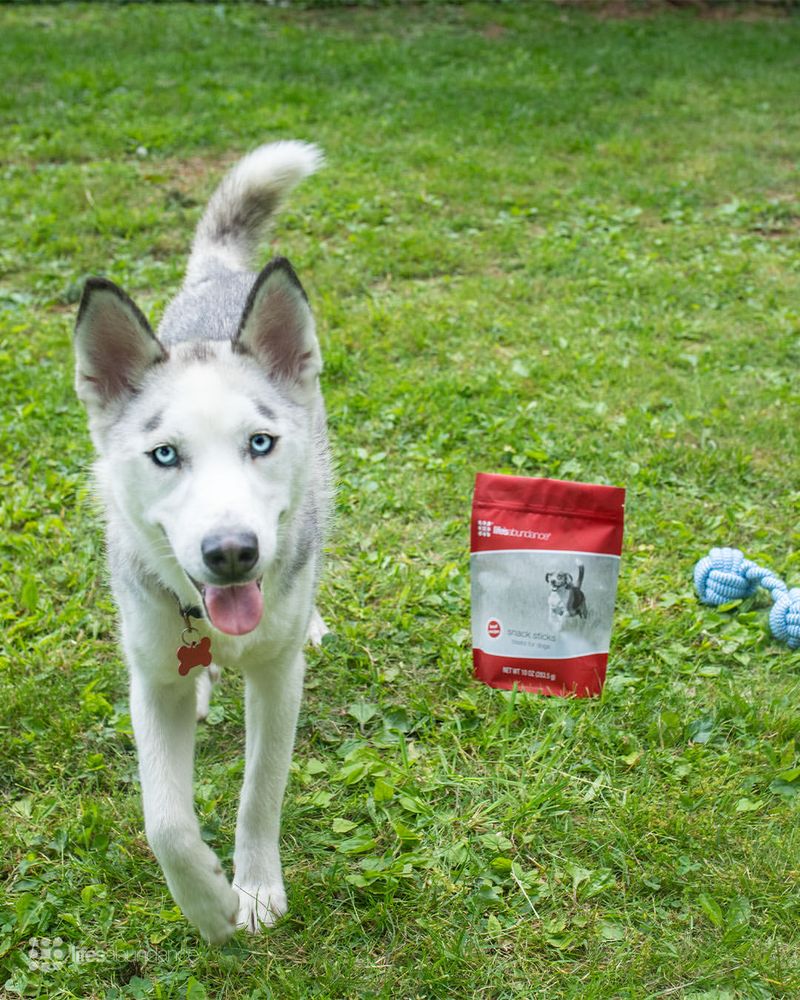Dogs have been our loyal companions for thousands of years, and there’s so much more to them than meets the eye. From their incredible senses to their unique behaviors, dogs never cease to amaze us. In this blog post, we’ll uncover 11 fascinating facts about man’s best friend that will surely leave you in awe and deepen your appreciation for these furry wonders. Whether you’re a dog lover or just curious about these incredible animals, these fun facts are sure to entertain and educate.
Dogs’ Super Smell
Dogs possess an extraordinary sense of smell that is 10,000 to 100,000 times more acute than humans’. This powerful ability allows them to detect certain diseases, locate missing persons, and even predict natural disasters. A dog’s nose has up to 300 million scent receptors, while humans have a mere 5 million. This incredible olfactory capability enables them to differentiate between a vast array of scents and even detect emotions. In fact, some dogs are specifically trained to alert people to potential health issues by detecting changes in their body odor. Truly, a dog’s nose is a marvel of nature.
Dogs and Emotions
Dogs are not only intelligent but also emotionally perceptive creatures. They can read human emotions through facial expressions and body language. This emotional intelligence enables them to provide comfort and companionship, making them excellent therapy animals. Studies have shown that dogs can understand the difference between happy and angry faces. They can even respond to human emotions with empathy, often trying to console their owners. Whether it’s a wagging tail or a comforting nuzzle, dogs have a unique ability to sense how we feel and react accordingly, strengthening the bond between humans and their furry friends.
Dogs’ Dreaming Habits
Just like humans, dogs experience dreams during their sleep. This occurs during the REM (rapid eye movement) stage, where their brains are highly active. Have you ever noticed your dog twitching, barking, or moving its paws while asleep? These are signs of dreaming. Researchers suggest that dogs dream about their daily activities, such as playing or chasing. Puppies and older dogs tend to dream more frequently due to their developing and aging brains. Watching a dog dream can be both adorable and intriguing, giving us a glimpse into their thoughts and experiences during rest.
Unique Dog Paw Prints
Every dog’s paw print is as unique as a human fingerprint, making them an interesting subject of study. The patterns on a dog’s paw pads can be used to identify them, much like fingerprints for humans. This uniqueness can help in tracking and research efforts, especially in wildlife studies. The texture and design of the paw pad offer insights into a dog’s activities and environment. Observing these prints can reveal much about a dog’s lifestyle and habits. So, next time your furry friend leaves a muddy paw print, take a closer look at their individual mark!
Dogs’ Incredible Hearing
Dogs possess remarkable auditory abilities, capable of hearing sounds at frequencies ranging from 40 Hz to 60 kHz. This wide range allows them to detect sounds that are imperceptible to the human ear. Their ear muscles can adjust the ear’s position to better capture sound waves. This acute sense of hearing is why dogs often react to noises well before humans do. They can hear things like a mouse moving in the walls or distant thunder long before a storm arrives. These abilities make them excellent companions for security and search-and-rescue tasks.
Dogs’ Tail Wagging Languages
Dogs communicate using their tails, and the way they wag can signify different emotions. A wag to the right usually indicates happiness or excitement, while a wag to the left might suggest feelings of fear or anxiety. The speed and height of the tail also play a role in communication. A high, fast wag often means a dog is friendly, while a slow wag might indicate caution or uncertainty. Understanding these signals can enhance interactions between humans and dogs. By paying attention to a dog’s tail movements, we can gain insights into their emotions and intentions.
Dogs’ Vocabulary Capabilities
Dogs are capable of understanding a surprisingly large number of words and commands, with some breeds like Border Collies being able to recognize over 1,000 words. Their ability to comprehend language is a result of both genetics and training. Dogs use context clues and tone of voice to interpret human speech, which allows them to respond to commands effectively. This linguistic ability not only highlights their intelligence but also strengthens the bond between dogs and humans. Engaging in regular training and communication can further enhance a dog’s vocabulary, making them even more responsive companions.
Dogs’ Hydration Techniques
Dogs have a unique way of drinking water that might surprise you. When a dog laps water, it curls its tongue backward to scoop the liquid up into its mouth. This motion creates a small column of water that the dog quickly closes its mouth around. This efficient method allows dogs to drink quickly and effectively, especially relevant in the wild. The action is surprisingly precise and involves coordination. Observing a dog drink can be fascinating, revealing an aspect of their survival instincts. Next time you see your dog drink, take a moment to appreciate their remarkable technique.
Dogs’ Loyalty Stories
Dogs are renowned for their loyalty, with countless stories of them demonstrating unwavering devotion. One famous tale is of Hachiko, a Japanese Akita who waited for his deceased owner every day for nearly ten years. This legendary dedication exemplifies the profound bond dogs can form with humans. Such stories are not uncommon and highlight the emotional depth and commitment dogs are capable of. Loyalty in dogs is often linked to their pack instincts, where forming strong bonds is essential for survival. This loyalty makes dogs incredibly special companions, providing unconditional love and support.
Dogs’ Social Structures
Dogs are inherently social animals, often forming packs with well-defined hierarchies. This social structure is instinctual, rooted in their ancestral ties to wolves. Within a group, dogs display various roles, with leaders and followers. These interactions help them navigate social dynamics and establish order. Understanding a dog’s position within its social hierarchy can aid in training and behavior management. Dogs thrive on companionship, whether with humans or other dogs, and require socialization to ensure their well-being. Observing dogs interact in groups can provide insights into their personalities and enhance our understanding of their social nature.
Dogs’ Lifespan Variability
A dog’s lifespan can vary significantly based on its breed, size, and health. Generally, smaller breeds tend to live longer than larger ones. For instance, a Chihuahua may live up to 15 years or more, while a Great Dane might only reach 8 to 10 years. Factors such as genetics, diet, and lifestyle also play crucial roles in determining a dog’s longevity. Regular veterinary care and a healthy diet can contribute to a longer, happier life. Understanding these differences can help dog owners make informed decisions about care, ensuring their furry friends enjoy the best quality of life possible.











